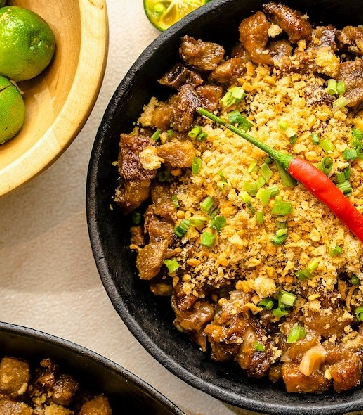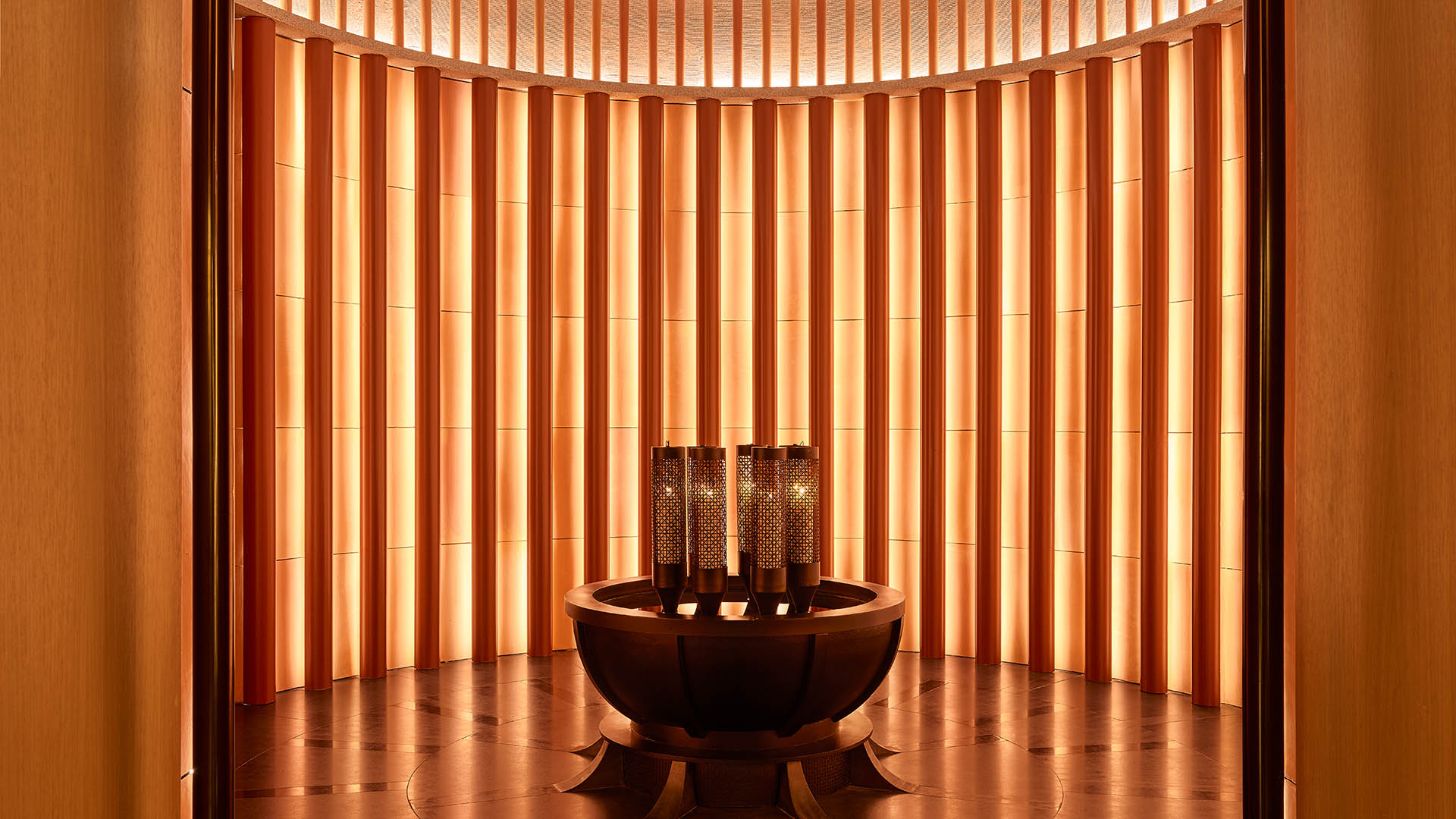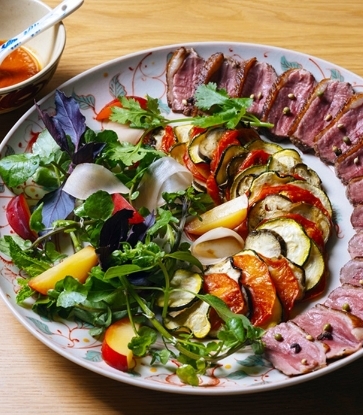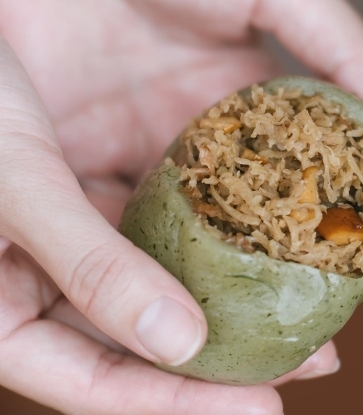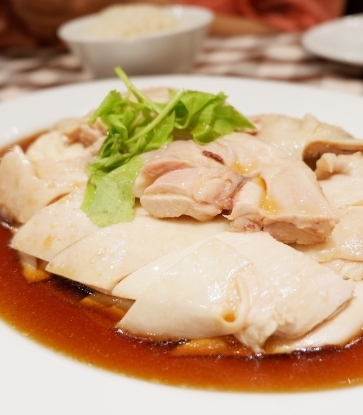As early as 9 a.m., Hai Kah Lang (Taman Cheras) is already bursting with energy, packed with diners from all walks of life. Whether local regulars or visiting tourists, all are eager for a taste of this Bib Gourmand restaurant's renowned seafood noodles. Inside a vivacious open kitchen, the staff work tirelessly behind their iconic live seafood counter displaying the day’s fresh catches — a signature attraction of the restaurant.
“I wanted a more exciting way of serving seafood and to showcase its quality. Almost 99% of our seafood is wild-caught, freshly brought in daily from Sabah, Indonesia, and the Philippines. We bring in more than 30 classes of seafood ranging from fish, shellfish, and crustaceans, introducing up to 100 species, depending on seasonality and the monsoon season," shares Steven Tan, owner of Hai Kah Lang (Taman Cheras).
Diners can choose from an extensive seafood menu serving up options like leopard coral grouper and geoduck, to tiger prawn, fish head, and lobster, cooked in a selection of five types of soup bases such as the signature clear soup, clear soup with evaporated milk, aromatic curry, tomato soup, and tom yum. To accompany the soups, diners can also choose from an assortment of noodles or rice congee.
Hai Kah Lang (Taman Cheras) was built on a foundation dedicated to serving seafood with an ocean-to-plate approach that's committed to sourcing far and wide for the freshest ingredients. The name "Hai Kah Lang" is directly translated from the Hokkien dialect to literally mean "people by the sea".
“People who live by the sea will, by right, know seafood very well — their close familiarity and attuned palate for exceptional sea produce can only be intrinsically acquired by those who live in that habitat,” Tan enthuses.

The Origins of Hai Kah Lang
The restaurant’s inception was more of a stroke of luck in timing than a planned business venture.
“I did not set out to open Hai Kah Lang (Taman Cheras). I ran a seafood steamboat restaurant in Balakong for seven years before closing it down due to the pandemic in 2020. Following that, and looking for ways to survive the aftermath of COVID-19, I opened a seafood retail store across the street from where Hai Kah Lang (Taman Cheras) now stands. At that time, somehow, I just couldn’t find a good place for breakfast," recalls Tan.
“When the breakfast noodle shop nearby was about to shutter its doors, I had an epiphany — why not open my own breakfast place?" The concept was conceived in December 2021, and Hai Kah Lang (Taman Cheras) opened the following month.

The Family’s Tradition and Legacy Lives On
Hai Kah Lang (Taman Cheras)'s story is not one of an overnight success, but a culmination of over 40 years of hard work and tradition. Tan’s family has been involved in the seafood trade for decades, crafting handmade fish balls, fishcakes, and yuba fish balls in Balakong, a riverside township in the Hulu Langat District in Selangor.
Tan’s family is of Teochew origin, an area in China’s Chaoshan region of eastern Guangdong — a community well-known for their fish ball based broths. The Teochews were among the earliest Chinese settlers in Malaysia, with the first migrants arriving in the late 18th century. According to Tan, traditional Teochew fish balls require a process of painstakingly scraping the raw fish meat off from the bones, mincing it, and moulding it into balls by hand.
The fish balls are then soaked in hot water at a specific temperature, and that same water is used to create the base for their famous clear seafood soups. "The soup is known for its clarity, allowing the fragrant sweetness of the fish to shine through," explains Tan.

Less is More
With just four ingredients, Hai Kah Lang’s signature clear soup embodies the philosophy that less is more. The recipe uses fresh purified water, fish bones, residual water from fish ball production, and salt.
During our visit to the kitchen, Tan showed us the broken-down fish bones simmering in their massive 85-litre soup pot. "Every ingredient matters — the water source, the salt, and the cooking procedures for each component. Even cooking the fish, squid, and crab requires specific techniques," he explains, emphasising on the importance of clean water used especially in the making of the fish balls. For home use, however, Tan suggests replacing the fish ball water with dashi stock. (Refer to the recipe below.)
The philosophy behind the soup is simple: it should enhance and not overpower the natural flavours of its ingredients. Hai Kah Lang’s Clear Soup is a perfect reflection of this belief.
With easy access to fresh seafood sourced directly from the fishermen and the overseas proprietors themselves, popularity quickly grew through word of mouth. In the inaugural MICHELIN Guide Kuala Lumpur and Penang, Hai Kah Lang (Taman Cheras) was awarded a Bib Gourmand.
When asked how he and his team reacted upon receiving the recognition, Tan recalled the moment with amusement. “Honestly, when we received the letter [to the MICHELIN Guide Ceremony], my staff set it aside, unaware of its significance. For most of them, English wasn’t their primary language. I believe it sat on our counter for weeks!” he laughed. “Of course, we were thrilled and so proud to be recognised for our dedication!"
Hai Kah Lang’s Signature Clear Soup with Seafood and Noodles
Ingredients for the Clear Soup Base
- ½ thumb-sized fresh turmeric
- 400g fresh fish bones
- 1 teaspoon sea salt
- 1 tablespoon cane sugar
- 10g coriander
- Fried garlic and oil
- 2 litres water
Other Ingredients
- Wild-caught Kedah prawns
- 1 live flower crab
- 100g Batik clams or white clams
- 50g pointed squid
- 3g dried seaweed
- 50g fresh fish
- Vermicelli or any noodles of your choice
How to Prepare the Clear Soup
- We use fish ball water but you can also soak 20g kombu in 2 litres purified water overnight. Do not wash kombu beforehand.
- Take the kombu water out of the chiller and simmer for 5 minutes. Be careful not to boil it.
- Take out the kombu and add pre-blanched fresh fish bones into the stock. Make sure to use only fresh fish bones.
- Cook for 1 hour at low heat, add salt and sugar to your preference.
- Strain out the fish bones thoroughly from the soup and set aside.
Assembly
- Pre-cook the noodles and set aside.
- Bring the soup to boil at high heat, and then cook the seafood in the following sequence: clams, crabs, prawns, fish, squid.
- Strain out the seafood from the soup and add in the noodles before placing the seafood back in together with the seaweed, garlic oil, and coriander.
- And the dish is ready! Serve with sambal if desired.
Hai Kah Lang (Taman Cheras) is located at 44 Jalan Kaskas 2, Taman Cheras, Kuala Lumpur, 56100, Malaysia. Book your table via our restaurant page here.







